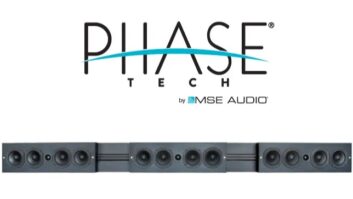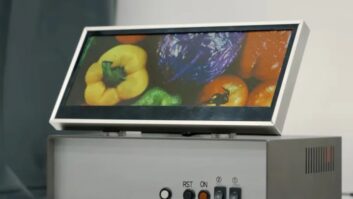So you think “Made In U.S.A.” color TVs are a thing of the past? Don’t bet on it, because in fact United States-based TV production is alive and, if not exactly hale and hearty, still accounts for a healthy double-digit share of the market.
But for how much longer is a very open question.
I got my information from the International Trade Commission’s (ITC) report on the impact of unfairly low-priced color sets from China on what’s left of the domestic color manufacturing industry. The ITC had to make a positive injury finding before the Commerce Department’s International Trade Administration (ITA) could order Customs to begin imposing penalty duties on the offending TVs as a way to level the market playing field. I covered the ITA ruling in an earlier column (see TWICE, July 26, p. 26).
According to the ITC, during the 2001 to 2003 period covered by its report, there were seven makers turning out TVs here. They include Five Rivers Electronic Innovations of Greenville, Tenn., the contract-manufacturing operator of a former Magnavox plant whose union-supported complaint launched the antidumping probe, and six Japanese-owned companies: Matsushita Kotobuki, Orion, Sanyo Manufacturing, Sharp, Sony and Toshiba.
The ITC report shows domestic factories had unit shipments to U.S. customers of 4.71 million in 2001, rising to 4.74 million in 2002, but declining 25 percent to 3.57 million last year. Sales value rose from $2.48 billion in 2001 to $2.51 billion the following year, and sank 32 percent in 2003 to $1.72 billion.
Collectively, the seven companies had net income of $113.8 million, $120.1 million and $128 million over the 2001 to 2003 period, although three reported operating losses for 2001 and 2003, and four were in the red in 2002.
As to the threat to the health of domestic producers posed by China, the ITC reports that only 56,000 of covered imports originated there in 2001, or just 0.5 percent of all imports. But that jumped to 1.29 million in 2002 for a 9.3-percent import share, and rose to 1.76 million last year for a 13.2-percent share.
At the same time, the average value of a set from China dropped from $483 in 2001 to $210 in 2003 and just $181 last year. The average price of imports from all other countries held relatively level at $354, $344 and $348, respectively. The average U.S. shipment price of a U.S.-made set in 2003 was $481.16, down just 8.7 percent from 2001.
So, do low-end Chinese sets hurt domestic producers? It seemingly depends on where you sit in the distribution chain. The Big Five CE retailers (Best Buy, Circuit City, Sears, Target and Wal-Mart) all agreed that those sets expand the market more than they take away, while manufacturers had a directly opposing position. Importers were divided on the question.
So where does all the downward pressure on pricing come from? Of all retailers asked, 20 percent said it stems from price reductions at the high end, while 28 percent cited the pull-down impact of cheaper low-end models. A surprising 20 percent blame it on the pricing demands of power retailers, while 19 percent said it reflected the impact of new technologies on the market.
Not surprisingly, 66 percent of manufacturers said leader pricing was the prime pricing culprit, while 13 percent blamed the clout of big retailers.
As for the future of domestic production, the ITC says those U.S. factories operated at 61 percent of capacity in 2001. That declined to 57 percent in 2002 and sank to a soft 44 percent in 2003. Given that, and the fact that three of the remaining six makers are showing operating losses, it’s a good bet that more of them will be following Sharp — and the Dutch, French and Korean makers who made the move earlier — in transferring TV production out of this country to Mexico or the Far East.













